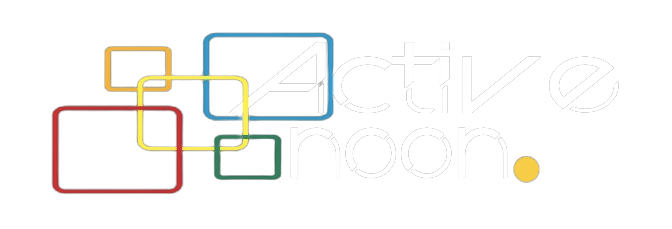Nowadays, the businesses operate at a breakneck speed and thus efficient supplier management is a pre-requisite for any organization to enhance its procurement process, create some safeguards against risks and maintain great partnerships with vendors. One of the most important elements of supplier management is the process of the Request for Proposal (RFP), which aim to select the best possible candidate for your organization’s needs by evaluating potential suppliers. The RFP software is one of the most reliable ways nowadays and with the availability of a large number of supplier management solutions, the choice becomes a formidable task. This article will be an introductory guide presenting tips that will show you the way and make it possible to choose based on your interests and goals.
Understand Your Organization’s Needs
Upon beginning the process of acquiring an RFP supplier management solution, the first step, of course, is the one wherein organizational need to be clearly defined. Complete an in-depth assessment of your current procurement environment, focus on the processes you can improve, and determine the necessities such a solution must have to function well. Ask yourselves these important questions: How big is your company? Is your supply chain as simple as your neighbour’s small business down the road or do you have to deal with more complex logistics? What particular set of regulations should you follow? This is where outlining your specifications becomes so crucially important, since with the number of solutions that you have at hand, you’ll be able to speak about aligning yours with your organization goals and objectives.
Evaluate the Solution’s Capabilities
RFP supplier management solutions offer a broad range of capability; thus, it is vital to determine which the solution you’ve chosen has satisfactorily addressed your organization needs. Seek for functions that help to ease the problems like templatizing, support tools for group review and evaluating, and built-in systems for scoring and ranking. Moreover, review its capacity to process supplier data, capture performance indicators, and foster communicating with potential suppliers. Make the solution scalable and, so, that your company is able to handle future growth and dynamic requirements.
Ease of Use and User Experience
Whether the software is effective or not and the level of the customer experience is mostly linked to how easy it is to use the software. Consider a procure-to-pay provider that features a user-friendly and easy to use interface for quick adoption and faster learning curve. Discuss how your product adheres to the different devices and platforms; also think about the product’s capability of interfacing with the existing systems and tools. Developing an ideal solution is allowing productivity and efficiency to grow without the chaos that could be caused by a dumb and confusing interface.
Data Security and Compliance
In the field of sourcing and managing suppliers, what matters most are the robust data protection and adherence to the existing privacy standards. Make it sure that the chosen supplier management solution RFP aligns with the regulatory industry-specific and data protection standards. For the businesses, look for solutions which provide extended security features, like encryption, multi-factor authentication and role-based access controls. Alongside that, assess the solution’s compliance with the law and regulations concerning it including the General Data Protection Regulation (GDPR) and industry-specific laws. This accomplishment may be achieved by focusing on data security and compliance. Hence, the risks may be limited in the organization and reduce the possibility of security breaches or legal disputes.
Supplier Engagement and Collaboration
Supplier management success, however, always has the bi-product of outstanding supplier communication and the close working relationship with suppliers. Think about an RFP (Request for Proposal) Supplier Management Solution which will keep the current and potential suppliers cooperating with RFPs throughout the process. Ensure that they can swiftly produce RFQs, participate in query and answer sessions and get the latest updates during the review. And as well, implement options that provide collaborative tools for panel members being internal stakeholders for using them to have a streamlined evaluation process, exchanging feedback and making informed decisions effortlessly with each other. Through being transparent and creating open communications, you can develop trusting relationships with your suppliers and improve the chances of having well and successfully collaborated then.
Scalability and Future Growth
With the company progression, the volume of documents can dramatically increase, and the capacity of your RFP Supplier management tool should be expanded accordingly. Avoid the ones that have problems with handling of more and more data, supporting a growing the number of users, and adapting to changing business requirements. Evaluate the adaptability of the solution to enable its smooth evolution when you introduce new features, functionalities, and integrations with other systems. In addition to this particular process, it is highly important to assess the vendor’s roadmap and dedication to further development so that the solution keeps on advancing and stays relevant in the ever-changing and competitive technological setting. Select a solution with scalability as a feature, and this will ease you of the need to often consider replacements and upgrades. The method is intended to serve the purpose of future-proofing.
Support and Training
A new RFP supplier management system has the power to make implementation not an easy thing even. Reliable support and training is vital for a seamless experience. Review the following vendor support services, like a personal account manager, knowledge base and customer service processes. Furthermore, feel free to inquire for training sessions either on-site or by virtual training, the video training, the instructional manuals or the user guides. An ideal vendor must have training and support as the core of their operation for your personnel to be not only able to use the software but to also benefit from it by employing it fully.
To round off the discussion, correct selection of supplier management solution is not granted but requires responsible consideration of number of elements including your organization’s requirements, the solution’s functions, usability, data protection, supplier interaction, system fit, purpose scope, support, cost, and trustworthiness criteria. Consequently, applying the mentioned steps and conducting the research thoroughly you would be able to make a proper decision which is consistent with your organization’s goals and provides sourcing-to-contract procurement process ease and efficiency.



















Leave a Reply